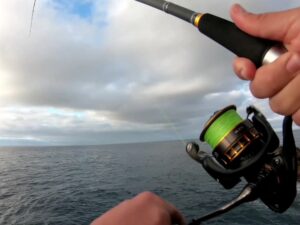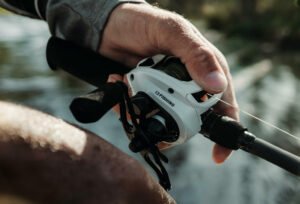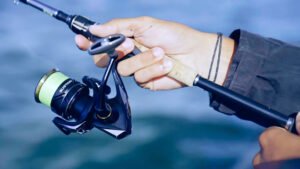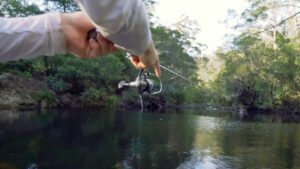TIPS
The Starter Autumn Bass Fishing Guide
Looking to up your bass fishing game this Fall? Check out our deep dive into Autumn bass fishing for tips and tricks on how to catch more fish when the temperatures start to drop!
Fall Into Some Of The Best Fishing of the Year!
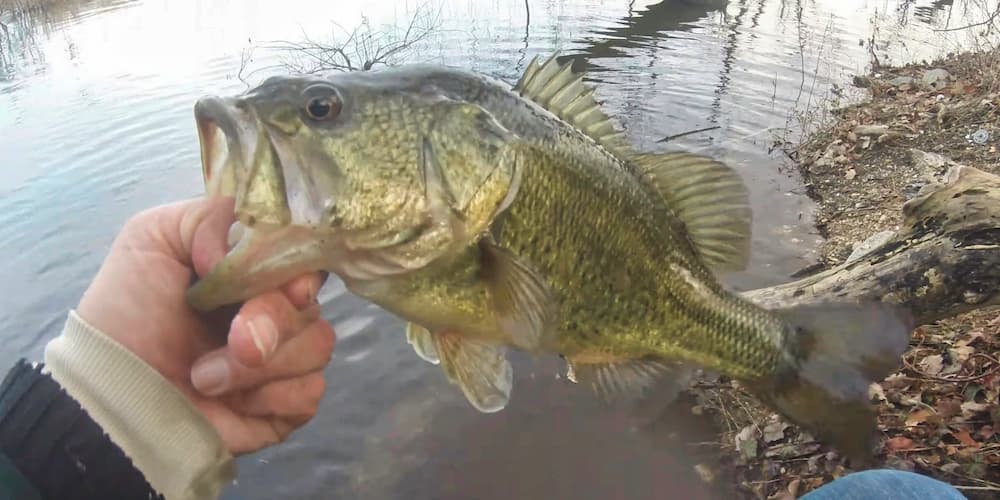
Fall fishing can be some of the best fishing of the year. The fish are active and feeding up for the winter, so they are willing to bite. However, the weather is getting colder, and the water temperatures are dropping, so you need to adjust your tactics.
Location
A key factor to consider when fishing in the fall is the location. The fish will be moving around as the water temperatures drop, so you need to be aware of their movements.Clear Water
In clear water, the fish will be spooked easier and typically will be more difficult to catch. You need to use lures that mimic baitfish to prevent startling them. Some of our favorite lures for clear water are jerkbaits, glide baits, and swim baits.Stained Water
If you’re fishing in stained water, the fish will be more aggressive and more spread out. Look for fish around points, drop-offs, and submerged structure. You can use a variety of lures, but we prefer to use flashy or vibrating lures to stand out in the murky water. Some of our favorite lures for stained water are crankbaits, jigging spoons, and blade baits.Focusing on Wood Laydowns and Stumps
Instead of making long casts out into the open water, focus on fishing around wood laydowns and stumps. The fish will be holding tight to cover in the colder water, so this is where you’re going to find them. Use lures that can be fished around cover, such as jigs, spinnerbaits, and crankbaits.Multiple Casts
Another tip is to make multiple casts at the same spot. This is especially effective when you’re fishing around laydowns, stumps, and other cover. The fish are often holding tight to this cover, so you need to give them a few different presentations in order to get them to bite. By making multiple casts, you’re increasing your chances of getting a bite.High Percentage Areas
When you’re really close to the fish, it’s often best to just make a few casts and then move on. The fish are often spooked by the boat and will move off if you stay in one spot for too long. By moving around and fishing different areas, you’re more likely to find fish that are willing to bite.Making Small Pitches
This allows the fish to see the bait and then decide if they want to eat it. If you just cast out and reel in, the fish often won’t bite because they don’t know what it is. By making small pitches, you’re giving the fish a chance to investigate the bait and then decide if they want to eat it.Pitching Like a Jig
This will help to trigger strikes from fish that are holding tight to cover. Often, these fish will see the bait and follow it for a while before finally striking. By pitching your bait like a jig, you’re imitating this natural behavior and triggering more strikes.Fishing in the Current
The fish congregate in certain areas when the current is flowing. Here are some of the best places to fish when the current is flowing.Slows Down
This is when you want to fish the deep pools and eddies. This is because the fish will be holding in the deeper water, where they can ambush their prey.Changes
If the current changes direction, the fish will often move with it. This is a good time to fish downstream of the change. The fish will be holding in the current and waiting for food to come to them.Riprap Bank
This is a good place to fish when the current is flowing. The fish will be holding behind the rocks and waiting for food to be swept by.Channel Swing
You can also fish the channel swings. These are areas where the current changes direction and the fish will hold in these areas.Current Seam
This is where the two currents meet, and the fish will often hold in these areas as well.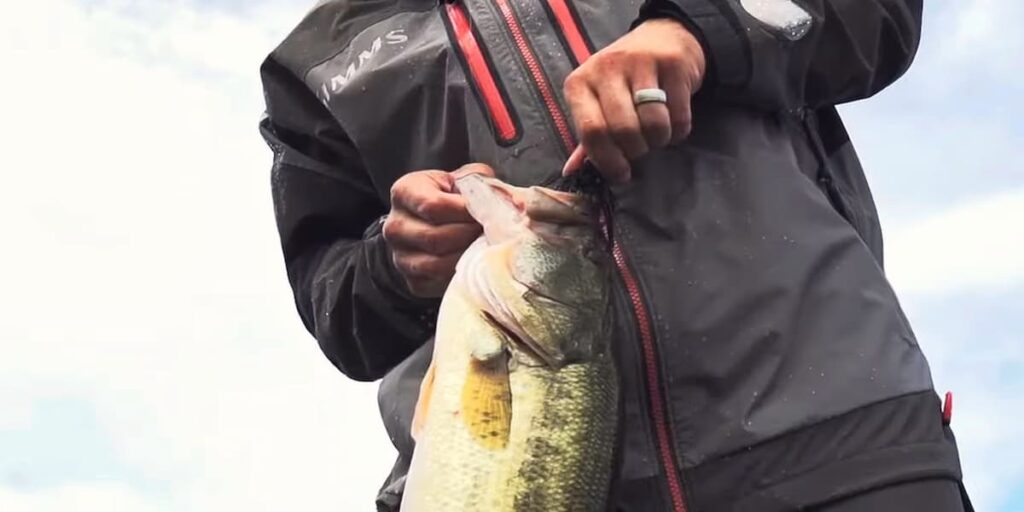
Best Fall Bass Lures
To catch bass on lures in the fall, you need to match the hatch. The baitfish are getting smaller as the water gets colder, so you need to downsize your lures. You also want to use lures that have a lot of action, to mimic the baitfish. The fish are looking for an easy meal, so they are going to be attracted to lures that look like they are easy to eat.Drop Shot
In the fall, drop shots are an excellent technique for fishing. A drop shot is a versatile technique that can be used in a variety of situations. When fishing brush piles and late summer tournaments, I use the Texas rig hook with a VM pork pen and a six inch worm.Here’s a simple guide to how to fish a drop shot. First of all, you need to tie your rig. It consists of a weight, a line, and a hook. A weight keeps the bait down in the water column, and a line connects the weight to the hook. The hook is baited with your chosen bait or lure, and then cast.It is important to keep your bait in the strike zone as long as possible when drop swimming, so you need a heavier weight than you would use with a standard drop shot. The weight will keep your bait down in the water column and in the strike zone for longer periods of time. You should also use a faster reel than you would use with a standard drop shot. A faster reel will allow you to keep the bait in the strike zone for longer.A finesse approach can be very effective when fishing in the fall. This approach uses lighter tackle and smaller lures or baits than a standard drop shot approach. With lighter tackle, you can cast your bait more easily and catch more fish with smaller lures or baits.You can cover a lot of water with a pitching and shaking presentation. The presentation is similar to fishing a drop shot, but you use lighter tackle and smaller lures and baits. For this presentation, you should also use a faster reel than you would use for fishing a standard drop shot.If you want to fish a drop shot, you can nose hook your bait instead of using traditional hooks. This technique is similar to fishing a drop shot, but you use a nose hook instead of a traditional hook. By nose hooking your bait, you will be able to keep your bait in the strike zone for longer periods of time, resulting in more fish being caught.Suspended Swim Bait
You can fish it a number of ways, but my favorite way to fish a suspended swim bait is slow rolling it. When the fish are suspended, they are often feeding on baitfish that are schooling near the surface. By slow rolling your bait, you are imitating a baitfish that is trying to escape a predator. This can trigger a strike from a suspended bass.To slow roll a swim bait, you need to use a slow retrieve. I like to use a slow, steady retrieve with occasional pauses. This mimics a baitfish that is trying to escape a predator. The fish will often strike when the bait pauses.Windy conditions can make fishing a suspended swim bait difficult. The wind will push your boat around and make it difficult to keep your bait in the strike zone. If you are fishing in windy conditions, you may want to use a heavier swim bait head to help keep your bait down.The Robo Worm
The robo worm is a great bait for fishing in the fall. It’s a small, soft plastic worm that imitates a minnow. I like to rig it on a size 2 hook and fish it on a light spinning rod. The robo worm is great for catching bass, bluegill, and crappie.When you feel that the robo worm has been nibbled, set the hook immediately. The fish will usually take the bait and run with it, so be prepared for a fight.The Neko Rig
The Neko Rig is a Japanese-style rig that uses a weighted hook and a soft plastic bait. It’s a great rig for fishing in the fall because it’s weedless and you can fish it in deep or shallow water.The great thing about the Neko Rig is that it’s very easy to set up. You just need a weighted hook and a soft plastic bait. I like to use a Yamamoto Cut Tail Worm or a Missile Baits Quiver Worm. I rig the worm so that the hook point is on the side of the tail of the worm, and that the weight is behind the shank of the hook. This allows the worm to fall straight and not twist on the way down.I like to use a worm with a thicker profile, a tail with a lot of movement, and a quiver tail on the back to imitate a bait fish. I also find that a six and a half inch quiver worm gets me better quality fish. I like to go with the Fried Melon color in clear water and the Red Bug Candy color in stained or dirty water.I start by fishing the Neko Rig in shallow water around grass beds. I cast it out and let it sink to the bottom. Then I shake it in place for a few seconds before reeling in and casting again. I continue this process until I feel a bite.When fishing in deeper water, I add a dobbins nail weight to the head of my worm. If I’m fishing in less than eight feet of water, I cut off the ball head of one of the two nail weights and use a lighter weight.Wacky Rigging
Next up is a technique that is very effective in the fall, especially when the fish are feeding on baitfish. This technique is called wacky rigging.For a wacky rig, you will need a medium to heavy action rod, a reel with 8-10lb line, and a hook. I like to use a Gamakatsu Finesse Wide Gap hook in size 1 or 2. You will also need some plastic worms. I like to use Senkos, but you can use any type of plastic worm that you like.You want to cast your worm out and let it sink to the bottom. Then, you want to give it a little twitch and let it fall back to the bottom. You want to do this over and over again until you get a bite. The key to this technique is to keep your worm on the bottom and not let it float up. If you let it float up, the fish will see it and they will not bite.The Spy Bait
I gained a ton of confidence in fishing spy baits this past fall and am looking forward to using it again this year.A spy bait is a small, hard-bodied baitfish imitation that can be fished slow or fast and is usually matched with a small spinnerbait. Spy baits are effective for catching bass of all sizes, but they are particularly effective for catching big bass.In the fall and winter, I like to fish my spy baits on main points and secondary points. Main points are the points that extend farthest into the lake, while secondary points are the points that extend farthest into coves or bays. I also like to fish my spy baits around docks, submerged vegetation, and submerged brush piles.When fishing spy baits, there are a few things to keep in mind. First, you want to use a light line (4-pound test or less) so that the bait can swim freely and easily. Second, you want to use a slow retrieve; a spy bait is a slow-moving bait, so you want to fish it slowly. Third, you want to make long casts; the longer you can keep your bait in the strike zone, the better.Bait Knockers
If you’ve been bass fishing for any amount of time, you’ve probably heard of bait knockers. Bait knockers are a type of vibrating jig that has been gaining in popularity in recent years. Some anglers swear by them, while others are skeptical.They have a metal blade that creates a vibration when the bait is retrieved, and this vibration is supposed to attract fish.Bait knockers are great for fishing in cold water because the vibration helps to trigger strikes from inactive fish. They are also effective in muddy water, because the vibration helps the fish to locate the bait.You can make bait knockers yourself, or you can buy them pre-made. If you want to make your own, you will need a jig mold, a blade, and some wire. You can find all of these supplies at your local tackle shop.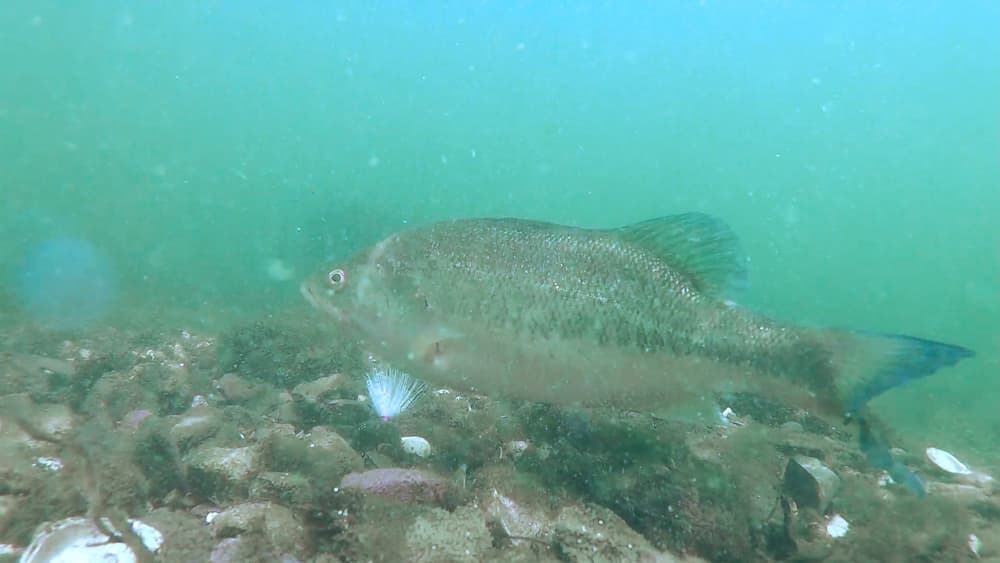
Conclusion
Today we talked about some of the best techniques for fishing in the fall. We talked about the importance of location, multiple casts, and pitching like a jig. We also talked about the best baits to use in the fall. These techniques will help you catch more fish this fall. So, get out there and give them a try!
Share
Tweet
Pin
As an Amazon Associate I earn from qualifying purchases.

